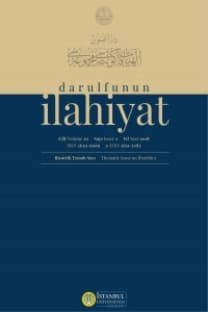Early Philosophical Ṣūfism; The Neoplatonic Thought of Ḥusayn Ibn Manṣūr al-Ḥallāǧ, Saer El-Jaichi
The present book is a revised version of the author’s doctoral thesis, submitted and defended at the University of Copenhagen in 2016. The book starts with an introductionand continues with four chapters, titled respectively “God’s Unknowability: Tanzīh as Neoplatonic Via Negativa”, “The Theophanic Creator-God: The Muʿill as One and Multiple”,“The Experience of Divine Love, Creation, and Cosmology”, “The Neoplatonic Role of the Primordial Muḥammad in Ḥallāǧ’s Cosmology”. The book is finalized with a conclusion which summarizes all the chapters. As the above-mentioned chapter headings already stress, the introductory section announces to the readers the author’s strong and persistentstance on placing the writings of Ḥallāj’s in the Neoplatonist backdrop. As the authorexplicitly states, this is a book to “analyse and reconstruct Ḥallāj’s sufi thought through a Neoplatonic lens” and to try and present Ḥallāj’s own version of Neoplatonism. The authoropposes those who have studied Ḥallāj’s texts in the Quranic and Islamic setting and have allegedly “neglected the Hellenised context in his mysticism” (p. 2), including the writerof the main work in the Ḥallāj studies, i.e., Louis Massignon.1 This is of course to set aside all the classical Muslim pioneers of theoretical mysticism after Ḥallāj, such as Ibn Arabi,Qūnawī, Dāwud Qayṣarī, Mulla Fanārī, Ruzbihan Baqlī, Mulla Ṣadrā etc., none of whom saw in Ḥallāj a representative of the Arabized falsafa in Islam, as they did in the case ofFārābī and Ibn Sīnā.
Anahtar Kelimeler:
Early, Philosophical, Ṣūfism
Early Philosophical Ṣūfism; The Neoplatonic Thought of Ḥusayn Ibn Manṣūr al-Ḥallāǧ, Saer El-Jaichi
The present book is a revised version of the author’s doctoral thesis, submitted and defended at the University of Copenhagen in 2016. The book starts with an introduction and continues with four chapters, titled respectively “God’s Unknowability: Tanzīh as Neoplatonic Via Negativa”, “The Theophanic Creator-God: The Muʿill as One and Multiple”, “The Experience of Divine Love, Creation, and Cosmology”, “The Neoplatonic Role of the Primordial Muḥammad in Ḥallāǧ’s Cosmology”. The book is finalized with a conclusion which summarizes all the chapters. As the above-mentioned chapter headings already stress, the introductory section announces to the readers the author’s strong and persistent stance on placing the writings of Ḥallāj’s in the Neoplatonist backdrop. As the author explicitly states, this is a book to “analyse and reconstruct Ḥallāj’s sufi thought through a Neoplatonic lens” and to try and present Ḥallāj’s own version of Neoplatonism. The author opposes those who have studied Ḥallāj’s texts in the Quranic and Islamic setting and have allegedly “neglected the Hellenised context in his mysticism” (p. 2), including the writer of the main work in the Ḥallāj studies, i.e., Louis Massignon.1 This is of course to set aside all the classical Muslim pioneers of theoretical mysticism after Ḥallāj, such as Ibn Arabi, Qūnawī, Dāwud Qayṣarī, Mulla Fanārī, Ruzbihan Baqlī, Mulla Ṣadrā etc., none of whom saw in Ḥallāj a representative of the Arabized falsafa in Islam, as they did in the case ofFārābī and Ibn Sīnā.
Keywords:
Early, Philosophical, Ṣūfism,
___
- The Neoplatonic Thought of Ḥusayn Ibn Manṣūr al-Ḥallāǧ, Saer El-Jaichi
- Yayın Aralığı: Yılda 2 Sayı
- Başlangıç: 1925
- Yayıncı: İstanbul Üniversitesi İlahiyat Fakültesi
Sayıdaki Diğer Makaleler
Waqf in Zaydī Yemen: Legal Theory, Codification, and Local Practice
Osmanlıda Huzur Dersi Örnekleri Tahlil ve Tenkitli Tefsir Metni Neşirleri IV
Islam Hukuku Teorisinde Majāz’da Dhihn / Zihin (Bilişsel Bağlantı) Işlevini Incelemek
Ahlâkî Tekâmülde Mûsikînin Rolü: Kindî’nin Mûsikî Risâleleri
Filmlerde Kutsal Kitap: “The Book of Eli” Örneği
Gearon, L. ve Prud’Homme, J. State Religious Education and The State of Religious Life
